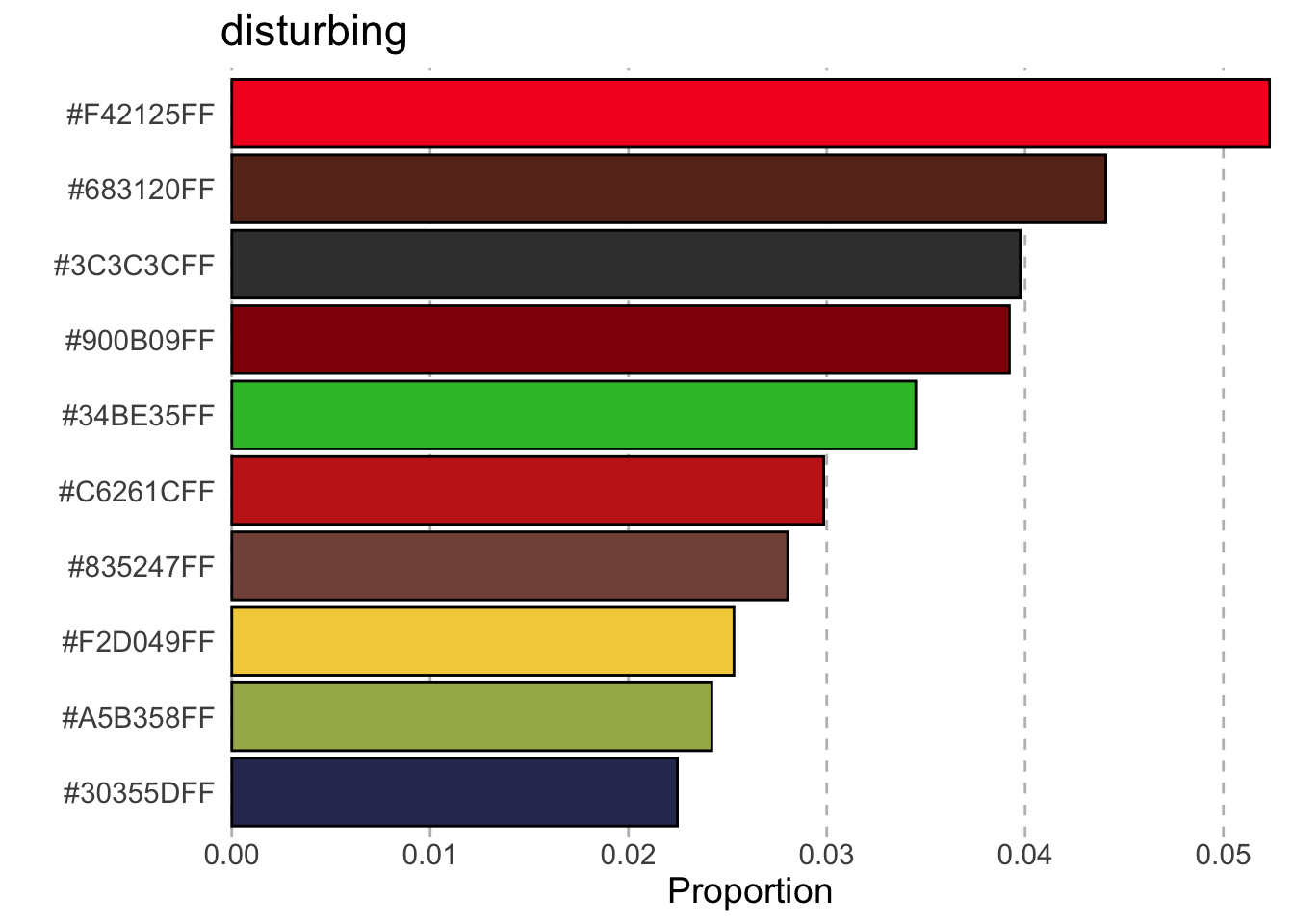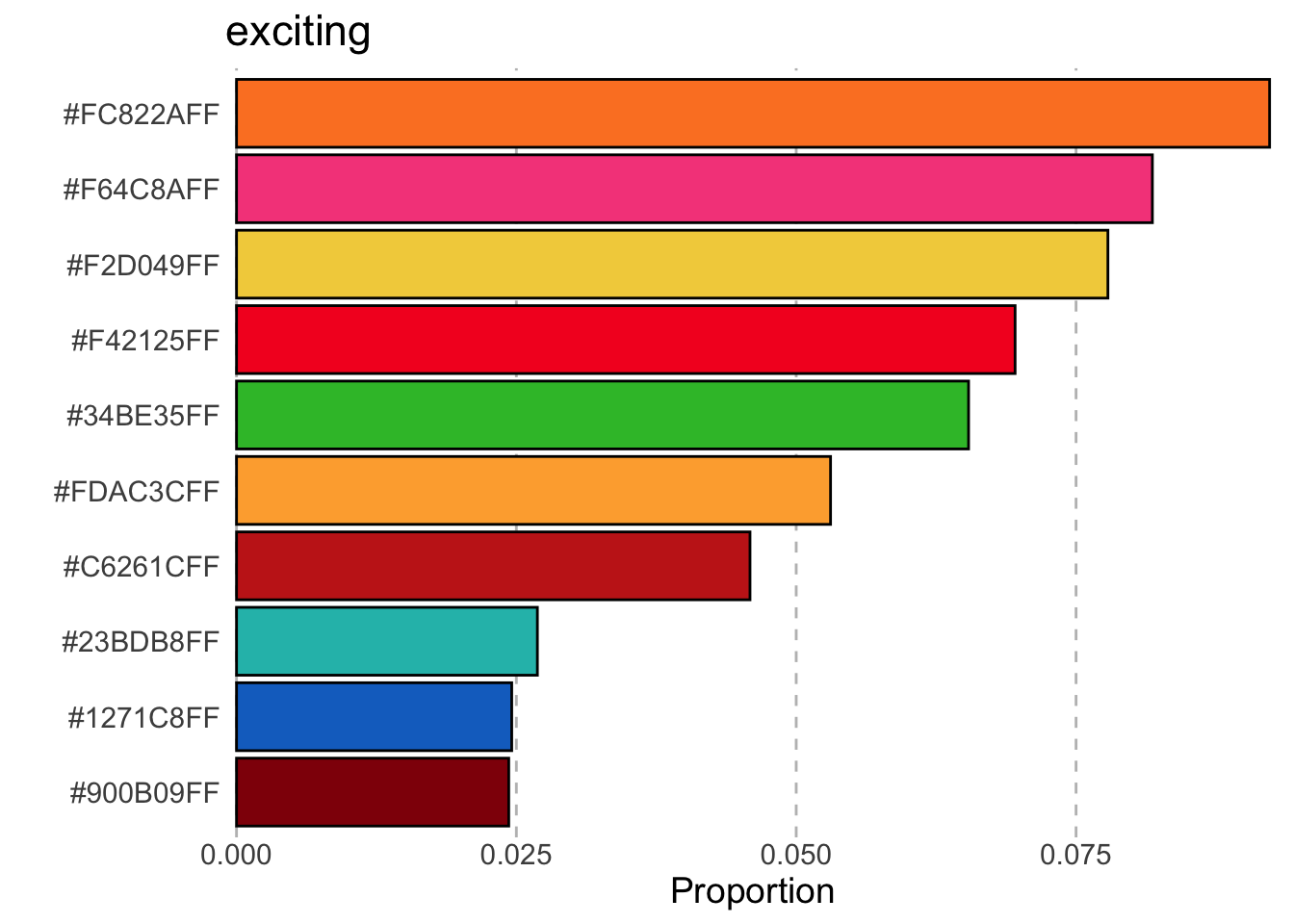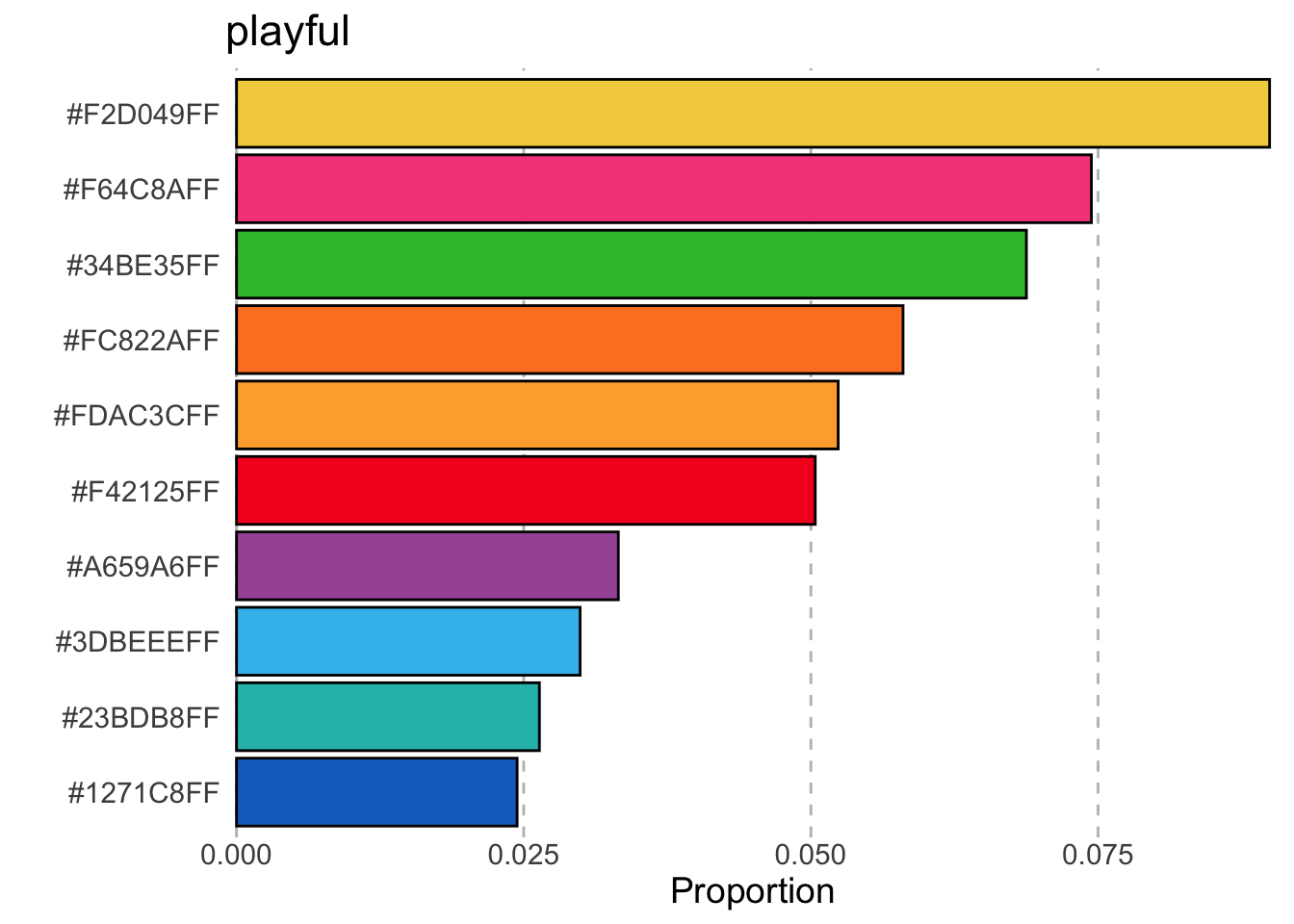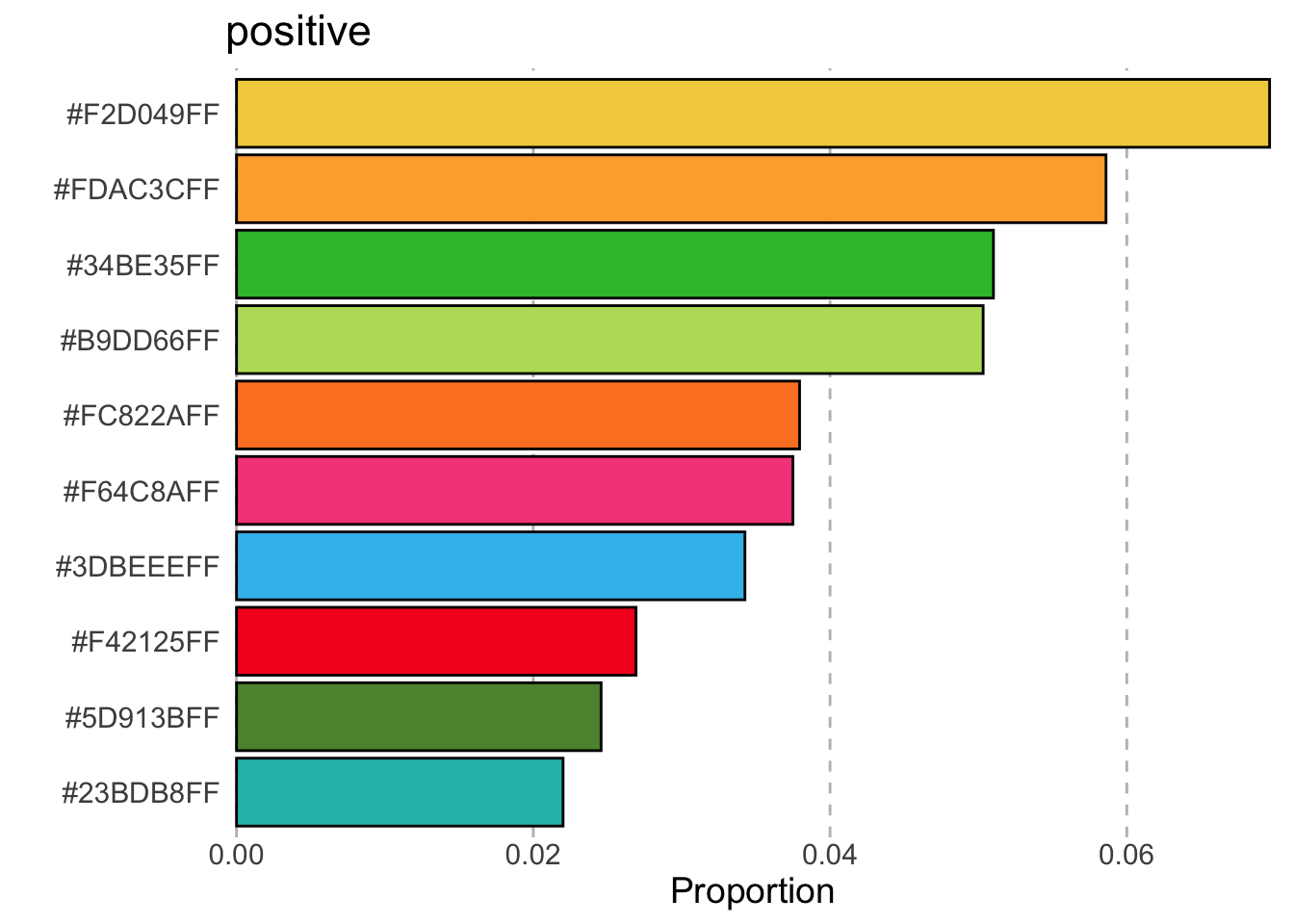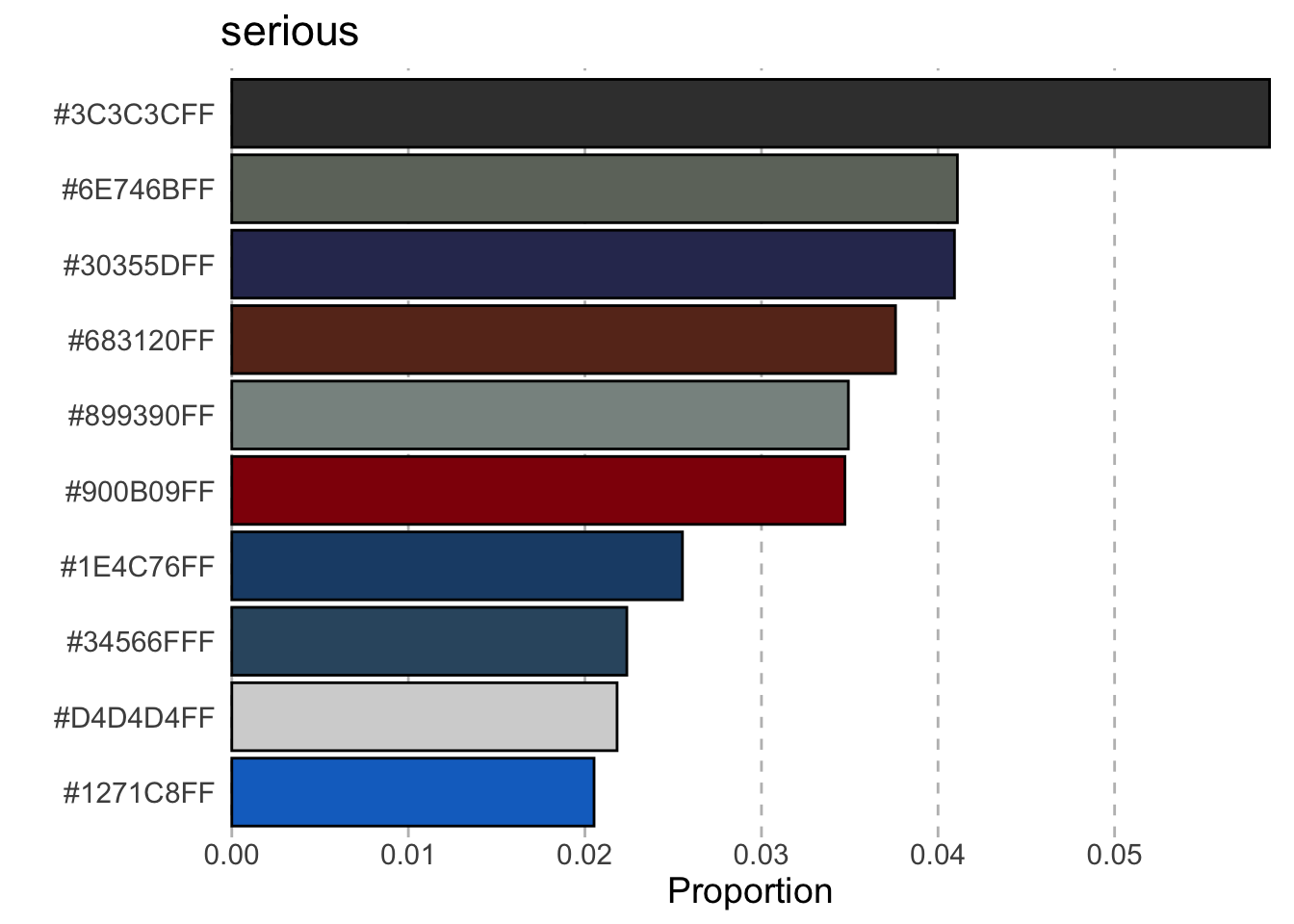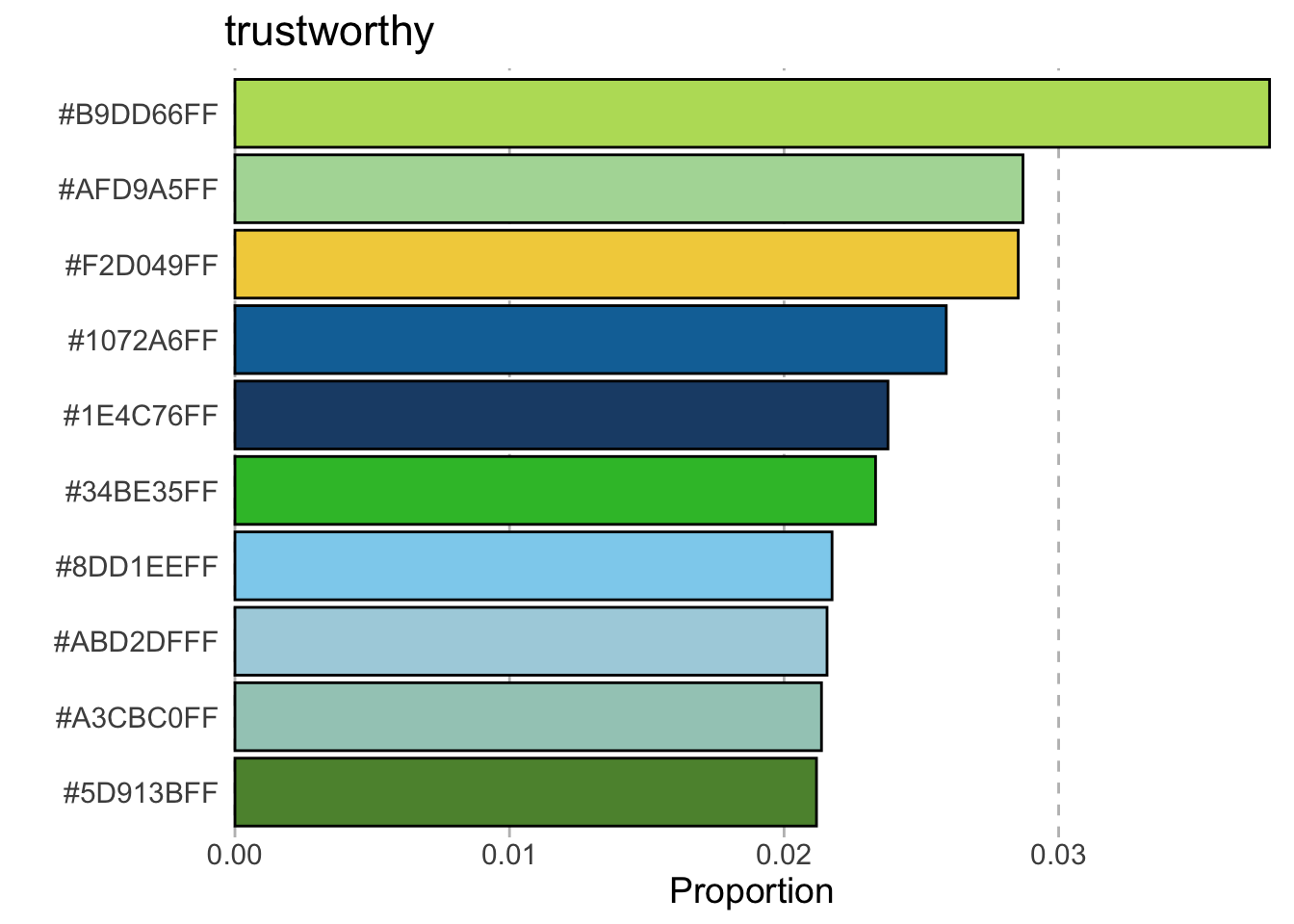library(tidyverse)
library(png)
# reads it as an 3d array where first two dimensions are
# the location on the image
# last dimension contains 4 columns which are r, g, b, alpha
imgs <- list(calm = readPNG("calm.png"),
disturbing = readPNG("disturbing.png"),
exciting = readPNG("exciting.png"),
negative = readPNG("negative.png"),
playful = readPNG("playful.png"),
positive = readPNG("positive.png"),
serious = readPNG("serious.png"),
trustworthy = readPNG("trustworthy.png"))
dims <- map(imgs, dim)
# convert array to a matrix
mats <- imap(imgs, ~matrix(.x, prod(dims[[.y]][1:2]), dims[[.y]][3]))
# get the frequency of colors as a data frame
colors <- imap_dfr(mats, ~{
res <- rgb(.x[, 1], .x[, 2], .x[, 3], .x[, 4])
data.frame(color = res[res!="#FFFFFFFF"])
}, .id = "affect") %>%
count(affect, color) %>%
group_by(affect) %>%
mutate(prop = n / sum(n))Affective colors in data visualisation
This post extracts the colors and its frequency distribution from an experiment where participants were required to make a five color palette based on certain set of emotions.
Bartram, Patra, and Stone (2017) conducted an experiment where participants were required to select 5 colors from a pool of available colors to make a 5 color palette for a bar plot or map on a white background based on a set of emotive words, specifically “calm”, “disturbing”, “exciting”, “negative”, “playful”, “positive”, “serious” and “trustworthy”. The result of this experiment presented in their paper is shown in table below.
| affect | frequency plot |
|---|---|
| calm | 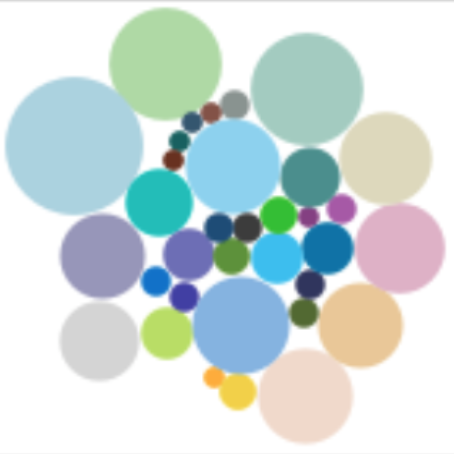 |
| disturbing |  |
| exciting |  |
| negative |  |
| playful |  |
| positive |  |
| serious | 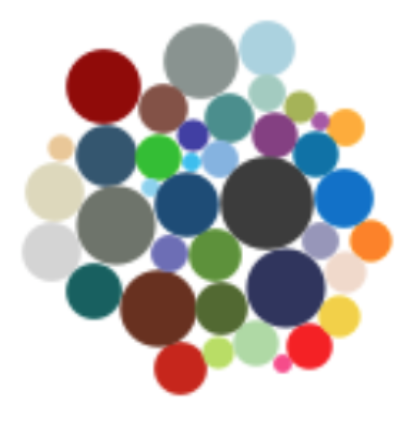 |
| trustworthy |  |
The paper is quite interesting but I actually couldn’t find the list of colors for each affect! So below is my simple analysis where I read in the image of the frequency plot, convert the colors to hex colors and remove white background to get the frequency of the colors. I plot then the top 10 colors for each affect.
walk(names(imgs), ~{
g <- colors %>%
filter(affect == .x) %>%
slice_max(prop, n = 10) %>%
mutate(color = fct_reorder(color, prop)) %>%
ggplot(aes(prop, color)) +
geom_col(aes(fill = I(color)), color = "black") +
labs(title = .x, x = "Proportion", y = "") +
scale_x_continuous(expand = c(0.01, 0)) +
theme(text = element_text(size = 14),
panel.background = element_blank(),
panel.grid.major.x = element_line(color = "grey", linetype = "dashed"),
axis.ticks.length = unit(0, "mm"))
print(g)
})
